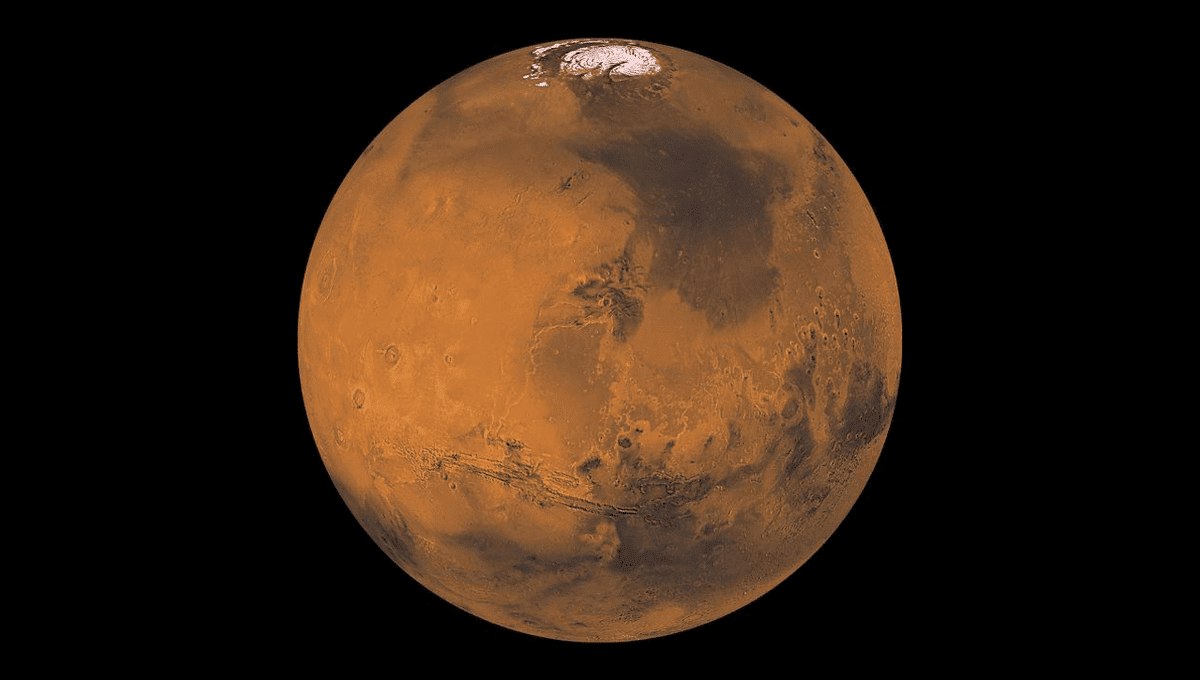
The question of life on Mars is an open one. One approach to provide insights is looking at the past of the Red Planet and estimating if and when it ever had conditions suitable for life. A new study states that in the distant past, the subsurface of Mars was habitable for microorganisms that feed on hydrogen and release methane – and if they existed, we might be in a very good position to find their traces.
Researchers cast an eye onto Mars circa 3.7 billion years ago. This is a complicated age in the geological history of the planet, named the Noachian age. It was before the extensive volcanism that formed features such as Olympus Mons – the tallest volcano in the solar system. Oceans and rivers were expected to have covered the surface of Mars, plus ice across the planet’s surface.
Water alone doesn’t make a world habitable – but it certainly helps. Simulations have revealed that the planet had the right conditions for life, but only under the surface. The soil would be saturated in brine, protecting microorganisms from ultraviolet rays and cosmic rays as well as providing water for them. The computer models show that simple microorganisms would have been able to survive and thrive there, using molecular hydrogen and carbon dioxide to power themselves. The byproduct of these organisms’ biological processes would be methane.
It is important to stress that the work looked at if the conditions were ok for life, not if life was present. However, the team believes that it is very likely that the conditions allowed for microorganisms to exist. The major limiting factor is the extent of the ice coverage which would have made life more difficult.
If life existed there, organisms would have easily risked their extinction by simply existing. The team estimate that based on everything we know, there could have been enough microbes producing methane to rival what we had in the Earth’s own ocean in the very distant past – and that’s a problem for life itself.
The absorption of hydrogen and release of methane can trigger a global cooling event, making the temperature drop by tens of degrees. Even if early Mars had a temperate climate in parts, these microorganisms might have taken it down to well below the temperature of freezing water.
The hope for these microorganisms (if they existed and also survived the global cooling event) was to retreat even deeper below the surface. This requirement suggests that if we were to look for the existence of these microorganisms three places that would be good to study are Hellas Planitia, Isidis Planitia, and Jezero Crater. NASA’s Perseverence is studying Jezero Crater right now.
The paper is published in Nature Astronomy.
Source Link: Below Ancient Mars's Surface, Methane-Producing Bacteria Could Have Thrived